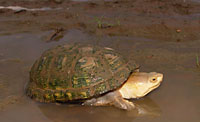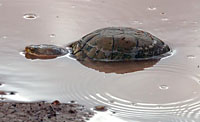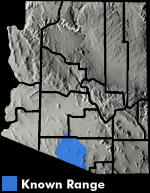Online Field Guide to The Reptiles and Amphibians of Arizona


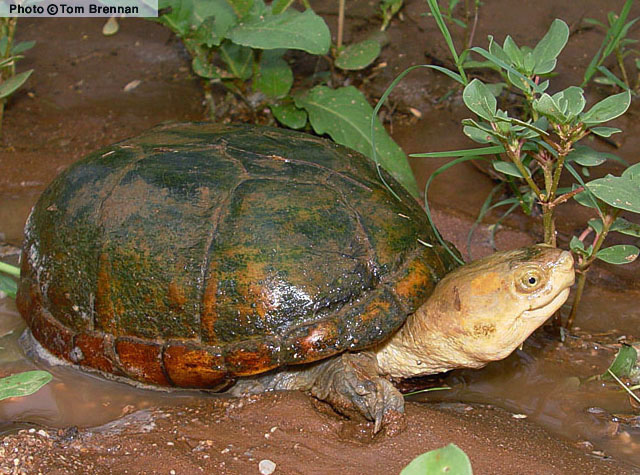
Pima County, AZ
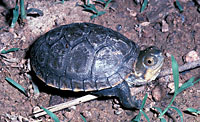 Juvenile. Pima Co., AZ |
| ARIZONA MUD TURTLE Kinosternon arizonense | |
| DESCRIPTION: A small (shell up to 152 mm or 6″ in length ) turtle with a dome shaped shell. The carapace is flat on top and is usually olive, brown, or yellow-brown in color. The marginal shields (see figure below) are often marked with yellow. The underside of the shell (plastron) is yellow and has two hinges so that the front and back can close when the turtle retreats inside. The top of the head is gray or brown and there are small, fleshy projections on the throat. The throat and sides of the face are plain yellow or cream distinguishing this turtle from the similar looking Sonora Mud Turtle which has reticulations on the head and neck. The first vertebral shield of the Arizona Mud Turtle does not contact the second marginal shield (see figure below) distinguishing it from the similar looking Yellow Mud Turtle.
DISTRIBUTION: This turtle is found in a small portion of extreme south-central Arizona at elevations ranging from 2,000′ to 3,500′. HABITAT: In Arizona this turtle inhabits Lower Colorado River Sonoran Desertscrub, Arizona Upland Sonoran Desertscrub, and Semidesert Grassland communities. Inhabits low valleys and gently sloping bajadas. Usually found in or near sources of temporary water such as pools within washes, cattle tanks, ponds, and ditches. BEHAVIOR: A semi-aquatic turtle that is most active during the day but is also active at night during the summer monsoon (July-August) when it forages for nocturnal toads. During the warm season it spends most of its time in the water. It travels overland during rainy conditions. During the cold months of winter and late fall it hibernates in an underground burrow. It also burrows underground during dry periods and can remain underground for more than a year during prolonged drought conditions. When captured or threatened it may emit a foul smelling musk from glands on the sides of the body. DIET: The Arizona Mud Turtle is a carnivore that feeds on toads, tadpoles, invertebrates, fish, and carrion. It has been observed pulling breeding toads under the surface of the water at night. REPRODUCTION: Mating takes place in summer and a clutch of brittle-shelled eggs is laid in an underground nest. Clutch size ranges from 1 to 7 eggs. By Thomas C. Brennan
|
|
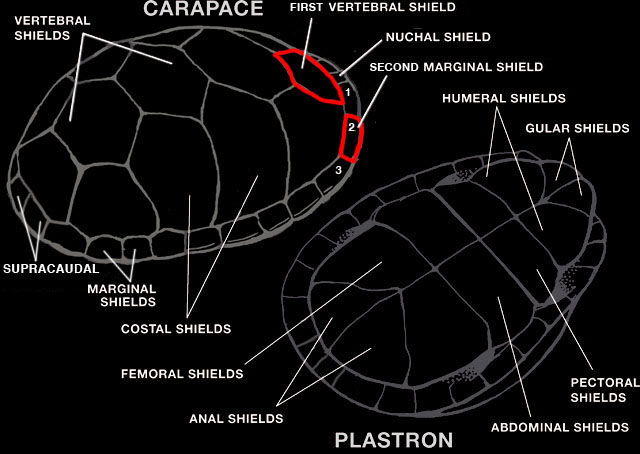
| Brennan, T. C., & A. T. Holycross. 2006. A Field Guide to Amphibians and Reptiles in Arizona. Arizona Game and Fish Department. Phoenix, AZ
Stebbins, R.C. 1951. Amphibians of Western North America. University of California Press, Berkeley, CA. Stebbins. 1985. Western Reptiles and Amphibians. Houghton Mifflin. New York, NY Stebbins, R.C. 2003. A Field Guide to Western Reptiles and Amphibians, Third Edition. Houghton Mifflin Company, Boston, MA. |
|
Visit Partners in Amphibian and Reptile Conservation:


HOME
Copyright © 2023, Arizona Game and Fish Department. All rights reserved.
If you make use of the textual contents of this site in reports, publications, etc. please cite and credit the author(s) and photographer(s). All photos on this website are copyrighted. However, those found in the species account section may be used for any noncommercial scientific, educational, or conservation purposes provided that photographs are not altered and continue to bear the copyright symbol and name of the photographer. Please contact the photographer regarding commercial use of copyrighted photographs.










